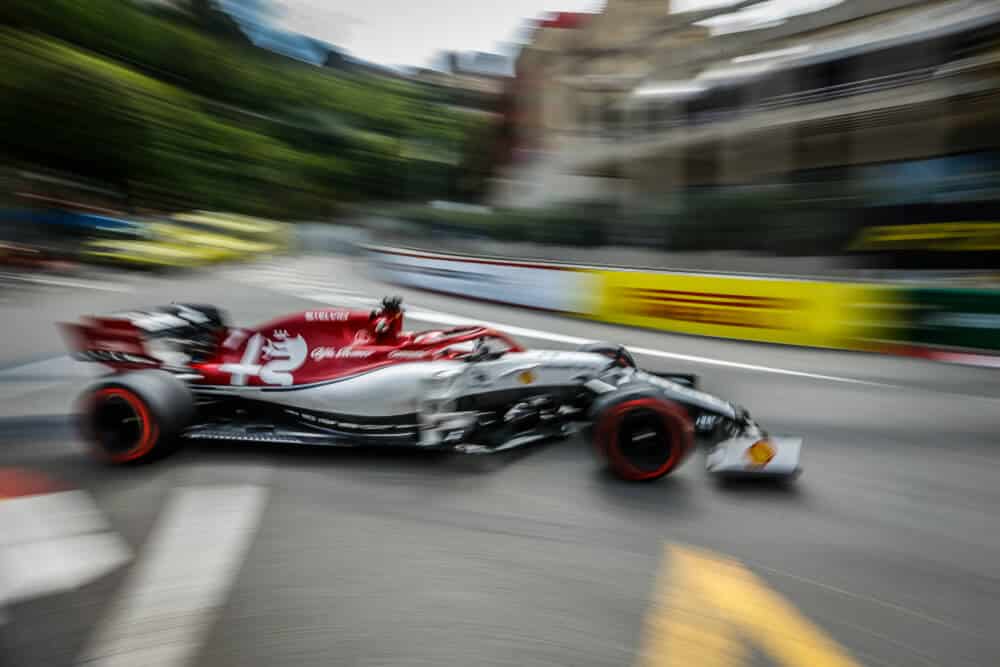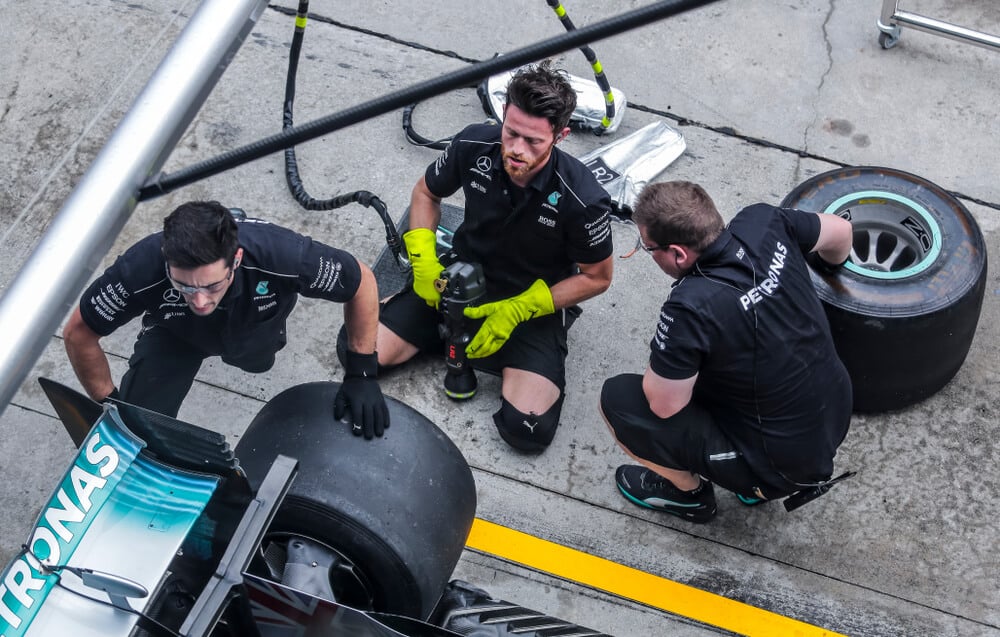Ever come across the term “desmodromic valves” while studying engines? Ever wondered what they are?
The term desmodromic originated from greek terminology, where “desmo” means controlled or linked, and “dromos” means ‘track’ or course. Dr. Fabio Taglioni, the father of the modern desmodromic valve actuation system, was the first to introduce and design The Desmodromic valve system.
In this article, we will explain desmodromic valves, what desmodromic valves are, what role they play in a Formula 1 car and how they work.
Table of Contents
Watch this video to understand how desmodromic valve system works.
What is a desmodromic valve on an F1 car?
Rather than using a standard spring to close the valves in an engine, a cam and leverage system is used to close the valves in a desmodromic valve system. When an F1 car is equipped with a desmodromic valve system, it can rev up to 5000rpm, which results in more power.
Key takeaways
- No spring is needed to open or close valves of a cylinder in a desmodromic valve system, as they are done mechanically.
- An engine equipped with a desmodromic valve system can produce revs up to 5000rpm.
- Since there is no spring involved in an engine with a desmo system, it avoids the problem of friction in the valve train.
- Due to the fact that there are many components involved, the desmodromic system is more complex than the conventional engine with its valve springs.
- The point of contact between the cam and rocker arm creates sliding friction which results in greater wear. These contact points on rocker’s arms are hard-chromed on most Ducati desmodromic systems so as to reduce wear and tear.

Understanding Desmodromic Valves
A desmodromic valve system comprises two camshafts and two actuators, each responsible for opening and closing the valves. This method ensures that the engine can be revved higher without disrupting its performance.
History and Design
In 1954, Ducati’s then manager, Giuseppe Montano, asked a talented engineer, Fabio Taglioni, to come up with a solution for problems faced by conventional spring systems, mainly heavy spring loading, valve float, and valve bounce at high RPM. Fabio came up with the Desmodromic valve system in order to combat these issues.
Mercedes Benz was the first to use this system in its W196 Formula 1 automobile and 300SLR sports cars in 1954 and 1955.
Desmodromic valve systems have been exclusively used by Ducati in all their engines since 1956.
How Does It Works Compared to a Standard Engine?
The valves of the cylinder are closed via a spring in a standard internal combustion engine. Since the spring compresses and expands 30 times each second, the valve spring may begin to float or bounce. When the valve is closing, and poppet valves in an internal combustion engine (ICE) valvetrain do not remain adjoined with the camshaft lobe, valve float occurs, which decreases engine performance and productivity.
Similarly, in valve bounce, the valve is partially re-opened because of not being in place properly, causing a decrease in engine performance and allowing the release of pressure and cylinder gases which causes the valves to overheat, leading to valve warping or failure.
The springs are stiffened to fix the valve float and bounce in a conventional engine. This increases the static pressure that keeps the valve closed. Even though making the springs stiff reduces the risks of valve float, at higher engine speeds, the engine has to overwork to open the valve at all engine speeds. Because of the spring pressure, the valvetrain experiences greater friction, leading to a high temperature and more wear.
In a Desmodromic valve system, a standard cam lobe opens each valve, and a double-finger rocker arm returns the valve to its closed location, eliminating the use of a spring. The main advantage of using a Desmo valve is that it prevents valve float and bounce. Since no heavy spring is involved, the engine performs well on high revs.
A desmodromic system works against the momentum created by the opening and closing of the valve, which depends on the constructive mass of the moving parts. One end of the rocker’s arm requires a roller which leads to an increase in the inertia, negating the advantage of its effective mass.
Hence, desmodromic systems must manage the sliding friction between the rocker arm and camshaft, ultimately generating greater wear. To reduce this wear, Ducati makes the rocker arm’s point of contact of hard-chromed materials.
Another point to be mindful of in a desmo valve system is that it is relatively hard to build in hydraulic valve lash adjusters, so the valves must be adjusted regularly. Moreover, the desmo system can be noisy, but it is usually canceled out by noise from other components such as exhaust.
Automobiles that use Desmodromic Valve System
Founder, Fabio Taglioni, made Ducati 125 Desmo for the Ducati 125 Grand Prix, which featured the desmodromic valve system. Moreover, the Mercedes Benz F196 Formula 1 of 1954-1955 and the 1955 sports racing car of Mercedes Benz 300SLR both came with a desmo valve system.
In the 1950s, Ducati started using the desmodromic system, and since then, it has become their signature in modern motorcycles.
Rather than using a standard spring to close the valves in an engine, a cam and leverage system is used to close the valves in a desmodromic valve system.
Frequently asked questions about Desmodromic Valves
Are desmodromic valves being used in F1?
Who invented the desmodromic system?
What is the difference between the pneumatic valve and desmodromic valves?
How does a desmodromic valve system work?
Conclusion
With their mechanical approach, the desmodromic valve system was able to produce a more efficient engine, which led to an ultimate increase in horsepower.
However, With the advancement of technology, the conventional spring valve engine can now rev up to 15000rmp without facing valve bounce or valve float, making the desmo system a thing of the past.
Nonetheless, Ducati still proudly makes the desmodromic valve system a part of their signature, proving it to be a worthwhile technology.
Article sources
Learn more about Formula One
Want to learn more about F1? Then visit our Formula 1 glossary and dictionary.



